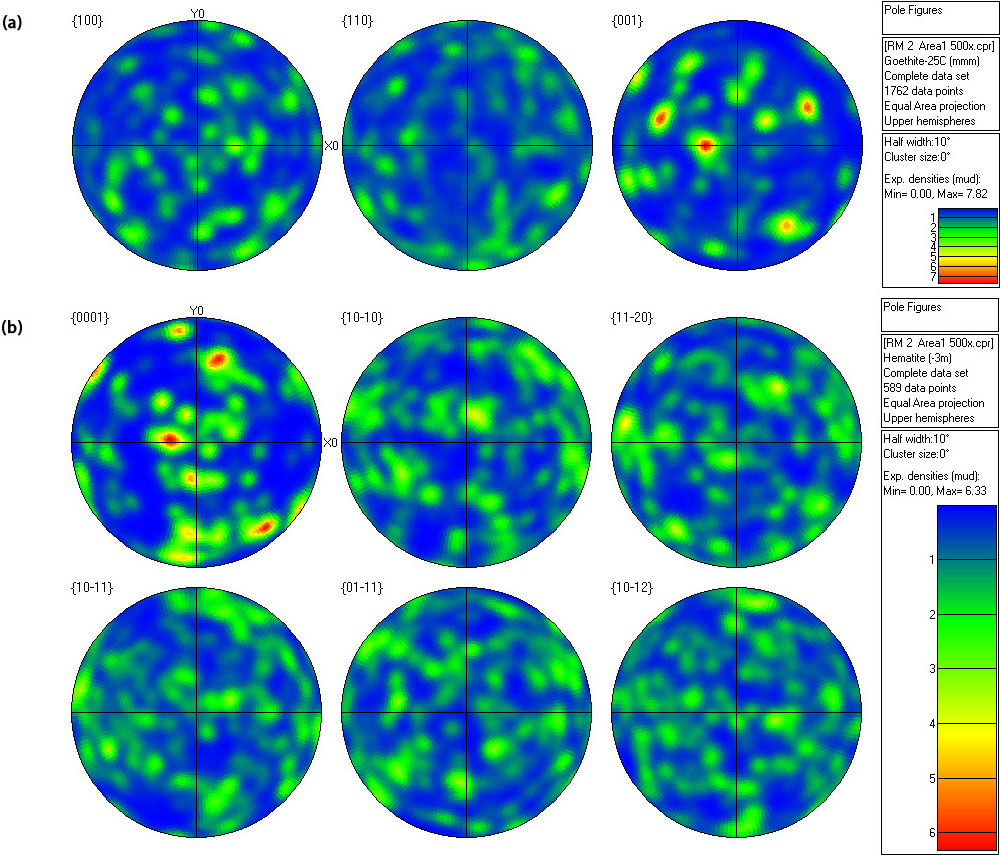IT-4-P-3134 Topotactic transformations of Goethite to Hematite during low metamorphic conditions
Crystallographic similarities between hematite and goethite allow us to model some topotactic transformation between these two minerals. For natural occurrence of goethite and hematite, such process is scarcely known. The aim of this contribution is to investigate the transformation that occurs in response to a change in deformation and metamorphic conditions of iron-formation rocks deformed at a very low temperature. We applied the EBSD technique to investigate the transformation between ferric oxides and oxyhydroxides combined with the observation of microstructures related to that process.
The samples came from iron-formation rocks in southeast of Brazil, in a region called Iron Quadrangle. Their mineralogy consists basically of quartz, iron oxides and oxyhydroxides. On the optical microscope magnetite is almost completely oxidized to hematite. Several magnetite core grains are filled with goethite and rimmed by hematite grains. The inner goethite and surrounding hematite grains occur in aggregates of irregularly shaped grains of varied sizes.
The EBSD analyzes of the clasts show a close relationship between different crystallographic axes of hematite and goethite crystals. The poles to the basal planes of hematite {001} match those of goethite crystals {001}.
Hematite and goethite, although belonging to different space group symmetries, have similar close packing structures. The structures of hematite and goethite can be described as a slightly distorted hexagonally close-packed of anions (O2- and OH-) stacked along their [c] axes. In these conditions, atom displacements are reduced, so that clear vectorial relations can be established between crystal parameters of the two structures. It is known that the transformation to goethite does not modify significantly the layers of anions in the structure of hematite. Therefore, the expected crystallographic orientation relationship can be described between these two phases.
We proposed that the transformation described in the studied iron formation rocks was performed in two different stages. Initially the original magnetite crystals were hydrated and transformed by oxidation into goethite. This might have been caused by a percolation of low temperature aqueous fluids in the early stages of the deformation. Subsequently, as the deformation proceeds and the temperature increases with the progressive metamorphism of the iron-formations, the newly formed goethite crystals dehydrate and transform into hematite. This can be described as a topotactic transformation because both hematite and goethite show coincidence of orientation in planes {0001} and {001}, and directions <a> and [010], respectively.

